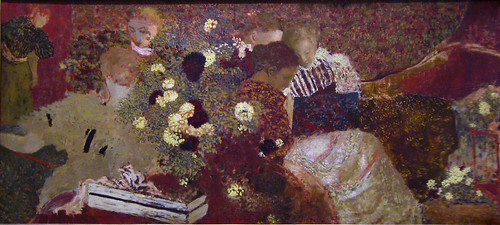
With the advent of Insta-Virtual Urban Design (a typical example here), I believe that we Urban Designers today are at a critical juncture in terms of our personal cultivation of design intelligence. The intellectual investigation afforded by the examination and perfection of the drawing hand is being displaced by the primary reliance on visualization tools such as Sketchup and Photoshop. I am very afraid that many young gifted designers are quickly losing not only their manual sketching, modeling and rendering skills, but their ability to explore their world in terms of the whole, lived-in experience. A kind of design mastery is gained from experiencing the urban world through the discipline of sketching it and, in turn, imagining urban spaces creatively on the drawing board or notebook. Despite the promise of virtual design becoming more "manual" and the tantalizing possibilities still latent in digital media, hand-sketching culture is languishing, and I am not sure that our virtualization tools are good surrogates.
An important thing to develop design intelligence is to exercise the mind to mentally translate three-dimensional space into perspectival understanding, transforming cityscape into a place of memory (an experienced environment). There is a hard-earned intelligence that is gained only by slowly honing the drawing craft. Drawn spaces are remembered spaces. Spaces you've taken from image to memory.
I discovered Edouard Vuillard in the National Gallery of Art last month, and I've been doubling my sketch-training efforts since, in an attempt to recover some of my atrophying drawing abilities. Don't get me wrong, I see the usefulness of Illustrator, yet, I definitely feel the eroding of ability that comes with primary reliance on it. Vuillard finally made me aware about what I have been losing.
As Donald Goddard reflected about viewing Vuillard's work: "Not only is everything, including human figures (women), given equal importance, as most writers notice, but everything is given special importance in an infinitely various world that is also an integrated whole". Vuillard's art fills out thus the rich space of perspectival memory. As Goddard continues, I reflect over what we urban designers are losing in engaging the disembodied virtual spaces we are now inhabiting day by day.
There are distinctions but no gaps, even when there are disruptions. Vuillard painted Place Vintimille, the park he saw from his window in Paris, three times for decorative works. The last time was in 1915-16, when the sidewalk was being torn up and renovated in the middle of World War I. We are confronted directly by the trench that stretches across the foreground (perhaps a reference to the battlefield) where workmen prepare the new sidewalk. Still, children play in the park, people sit on benches, the trees spread out singularly but in abundance, and through them can be seen the line of apartment buildings on the other side of the park. Near the very center of the painting are the tiny figures of a man and a woman seated on a bench on the far side of the park, the man reading a newspaper, the woman wearing a red skirt. It is the only spot of real red in the painting, as though it were saved just for her, and it makes us notice every other detail of this grand tapestry. More than any of his confrères, Vuillard, the citydweller, was a man of nature, echoing the philosophy of the American conservationist John Muir, who wrote in the late 19th century, "When we try to pick out anything by itself, we find it hitched to everything in the universe," and of Muir's contemporary, the English naturalist and novelist W.H. Hudson, who wrote, "We are no longer isolated, standing like starry visitors on a mountain-top, surveying life from the outside; but are on a level with and part and parcel of it."
If Urban Designers are to have one skill on Architects and Landscape Architects it is Vuillard's immersed experience of illustrating memory-scape...level with and no longer outside of the spaces of dwelling.



2 comments:
Hi Eric-
Great to meet you at both the "Making Charlotte Smarter" and BarCamp this past week. I think it's important to see interesting examples of civic engagement in our fine city!
I'm actually an industrial designer by training, and I agree that we lose something when we don't sketch by hand. The process of innovation is iterative, and sketching is an important tool for seeing things differently. It serves as a "hands-on" means to quickly visualize our thoughts and ideas. I hope the digital techniques work toward replicating that experience, though I believe the ability to sketch on paper will always be extremely compelling.
i certainly want to make sketching part of my creative habit. my drawing abilities are not great, but i do believe that it allows us to see and experience our world in a different light. check out this creative idea http://www.arthousecoop.com/projects/sketchbookproject.
Post a Comment